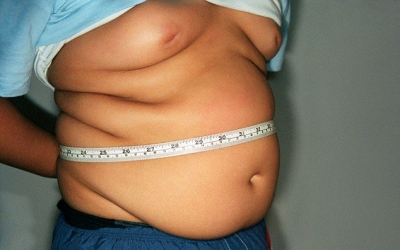- Latest news▼
-
12:16, April 19 Scientists grow human mini-lungs in lab

-
10:23, April 19 JAMA Oncology: Urine test can help rule out high-grade prostate cancer with almost 100% accuracy, study shows

-
18:00, April 18 Daily Mail: Elderly woman in China gets infected with brain-eating amoeba

-
14:19, April 18 Obesity: exercising before breakfast helps you lose weight faster

-
10:42, April 18 The Conversation: childhood trauma can cause pathological hoarding

-
08:37, April 18 Daily Mail: Satiating food reduces cravings for sweets, nutritionist says

-
18:22, April 17 First Armenian-German Conference entitled “Heart Failure Spring School”

-
08:38, April 17 Why do kids usually recover from COVID-19 more easily than adults?

-
14:37, April 16 Daily Mail: intermittent fasting is not suitable for children and women before their periods

-
16:41, April 15 Cell: in carriers of defective BRCA2 gene, sugar consumption increases cancer risk

-
15:04, April 15 305 cases of measles recorded in Armenia so far in 2024

-
14:38, April 15 Food and Environmental Virology: tea contributes to effective coronavirus control

-
12:41, April 15 Daily Mail: vitamin A, B3 and E supplements can be dangerous

-
10:56, April 15 Diabetes Care: evening physical activity is good for the heart

-
08:27, April 15 Women are more susceptible to blood loss and death during bypass surgery than men, researchers say

All materials
Could house dust be making children FAT?

Chemicals typically found in house dust could trigger a key receptor which is linked to obesity, scientists have discovered.
The substance, found in flame retardants, lubricants, hydraulic fluids and plastics, has been found to bind to the PPARgamma receptor, a protein.
And, under the right conditions, researchers at Duke University in North Carolina, found the chemicals can activate the receptor, which regulates fat metabolism, cell proliferation and cell death.
Though a preliminary study, it adds to a growing body of evidence supporting the theory that chemicals in household products are influencing people's waistlines.
The activation of the receptor, during a child's early developmental stages, 'may be a key factor in obesity', said Heather Stapleton, who led the study.
PPARgamme - short for peroxisome proliferator-activated nuclear receptor gamma - regulates fat metabolism, cell proliferation and cell death.
Dr Stapleton and her team have previously shown many chemicals, including the widely used organophosphates and polybrominated diphenyl ether (PDBE) metabolites, can bind to PPARgamma.
But studies also showed that binding to the receptor did not always activate it.
To develop their understanding the team conducted this new study focusing on chemicals found in dust samples.
They chose indoor dust because it is an important pathway through which people, especially infants and young children, are exposed to everyday contaminants.
Young children ingest around 50 milligrams of house dust each day, according to US Environmental Protection Agency estimates.
Co-author of the study, Dr Mingliang Fang, revealed that 28 of 30 semi-volatile compounds commonly found in indoor dust were 'weak or moderate' PPARgamma antagonists, meaning they could bind to and activate the receptor.
Dr Stapleton said: 'But what was very interesting was the level of activation observed following exposure to an environmentally relevant mixture of these contaminants in house dust samples.'
The researchers found signs of significant PPARgamma activation in more than half of the 25 dust samples collected from homes, offices and gyms, at a level of exposure that would be similar to a child's daily dose.
Further research is now underway to test the laboratory findings in conditions that simulate the type of chronic, low-level exposure to these chemicals that occurs in the real world.
'We are continuing to build on this research to determine what type of health effects may be caused by this level of activation in children,' said Dr Stapleton.
The study was published in the peer-reviewed journal Environmental Science & Technology.
Follow NEWS.am Medicine on Facebook and Twitter
- Related News
- Daily Mail: Satiating food reduces cravings for sweets, nutritionist says The specialist explained that often the great inclination towards sweets is caused not only by psychological hunger, but also by physiological (real) hunger…
- Daily Mail: intermittent fasting is not suitable for children and women before their periods Children and teenagers should stay away from it, because their bodies (especially bones) are still growing and developing...
- Food and Environmental Virology: tea contributes to effective coronavirus control According to the scientists, the teas inactivate SARS-CoV-2 in saliva...
- AJCN: Sugar in bread, rice, pasta can cause insomnia in women, study finds As researchers point out, the refined sugar in such foods may be to blame for sleep problems...
- Food Bioscience: dark chocolate supports growth of beneficial gut bacteria This positive effect can be enhanced by adding probiotics...
- Video
- Event calendar
- Archive
- Most read
month
week
day
- WHO: Nigeria pioneers revolutionary meningitis vaccine 1187
- One-third of women experience menstruation-related migraines, most often during premenopause - study 1183
- Daily Mail: vitamin A, B3 and E supplements can be dangerous 1070
- Food and Environmental Virology: tea contributes to effective coronavirus control 1062
- Cell: in carriers of defective BRCA2 gene, sugar consumption increases cancer risk 1034
- 305 cases of measles recorded in Armenia so far in 2024 1027
- Women are more susceptible to blood loss and death during bypass surgery than men, researchers say 971
- Diabetes Care: evening physical activity is good for the heart 927
- Daily Mail: intermittent fasting is not suitable for children and women before their periods 857
- First Armenian-German Conference entitled “Heart Failure Spring School” 626
- Obesity: exercising before breakfast helps you lose weight faster 525
- Why do kids usually recover from COVID-19 more easily than adults? 525
- Daily Mail: Elderly woman in China gets infected with brain-eating amoeba 514
- The Conversation: childhood trauma can cause pathological hoarding 513
- Daily Mail: Satiating food reduces cravings for sweets, nutritionist says 488
- Find us on Facebook
- Poll





